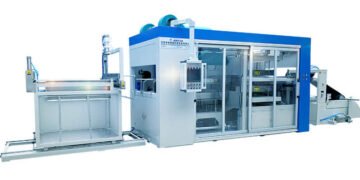The world has done incredible developments in autonomous car technology in recent years. Although self-driving cars have garnered most of the attention, other modes of transportation are also being automated. A notable example is the Taipei Self-Driving Gharry, an innovative project in the thriving city of Taipei, Taiwan. Let’s explore the concept of taipei self-driving gharry and see how did Taipei implement this ground-breaking technology.
The Concept of Taipei Self-Driving Gharry:

Taipei Self-Driving Gharry, also known as horse-drawn carriages, have a long and illustrious history. These old modes of transportation have been enjoyed by tourists from all over the world for their romantic and nostalgic experiences. But in today’s fast-developing technology environment, the notion of Taipei Self-Driving Gharry elevates this antiquated idea to new heights. taipei self-driving are an innovative and futuristic means of transportation that blend the allure of a classic horse-drawn carriage with cutting-edge autonomous technology.
Taipei’s Initiative:

As a thriving metropolis, Taipei is always looking for novel ways to meet its expanding transportation needs. The Taipei government introduced a pilot project in 2021 to test the viability of Taipei Self-Driving Gharry for transportation. Incorporating autonomous technology into the recognizable taipei self-driving gharry was intended to revolutionize the city’s public transit system and improve the travel experience for both locals and visitors.
Benefits of Self-Driving Gharry:
https://www.youtube.com/watch?v=oYUbSTGZJ0I
a) Safety:
Autonomous technology eliminates the possibility of human error, which is a major factor in accidents. Taipei Self-Driving Gharry wants to increase passenger safety and decrease the amount of transportation-related incidents by incorporating self-driving technology into taipei self-driving.
b) Environmental Sustainability:
Moving to environmentally friendly transport solutions is essential in light of growing worries about climate change. As they can be powered by electric or hybrid systems, Taipei Self-Driving Gharry have the potential to drastically lower carbon emissions, helping to a greener and more sustainable future.
c) Improved Accessibility:
For people with impairments or restricted mobility, Taipei Self-Driving Gharry can offer an accessible method of transportation. Thanks to the autonomous nature of these cars which promotes greater inclusivity, and allows everyone to take advantage of the city’s attractions and amenities
d) Tourism Boost:
By providing a distinctive and unforgettable experience, Taipei self-driving gharry have the potential to draw more visitors. A unique combination of modern and old technology distinguishes Taipei as a forward-thinking city.
Challenges and Considerations:
While the idea of Taipei Self-Driving Gharry is intriguing, there are several difficulties and factors that must be taken into account:
a) Technological Limitations:
As autonomous vehicle technology continues to advance, it will take extensive testing and system improvement to guarantee the safety and dependability of self-driving cars. It will be crucial to overcome technical obstacles and guarantee seamless interaction with the current transport network.
b) Public Acceptance:
Traditionalists who respect the authenticity and tradition connected to horse-drawn carriages may oppose the introduction of Taipei Self-Driving Gharry. Gaining acceptance and support for self-driving technology will depend on educating the public about its advantages and safety aspects.
c) Regulatory Framework:
The introduction of self-driving cars calls for the creation of extensive rules and guidelines to control their functioning. For these cars to be successfully integrated into the transportation system, it will be crucial to address legal and ethical issues, ensure data privacy, and establish responsibility frameworks.
Conclusion:
The Taipei Self-Driving Gharry project represents a daring and ambitious move towards revolutionizing mobility in one of Asia’s most vibrant cities. Taipei wants to offer its citizens and guests a more secure, environmentally responsible, and inclusive mode of transportation by combining the appeal of a traditional gharry with autonomous technology.
The initiative has the potential to change Taipei’s transit system, boost tourism, and serve as a model for other cities around the globe. The self-driving gharry is a representation of Taipei’s dedication to advancement and offers a glimpse into the future of autonomous mobility as the city continues to pioneer cutting-edge technologies.
FAQS
Q: What is a gharry?
A: The traditional horse-drawn carriage known as a “gharry” is common across Southeast Asia, including Taipei self-driving. It has been used for transportation and tourism, and it has cultural and historical value.
Q: How do Taipei Self-Driving Gharry work?
A: Autonomous driving systems in Taipei Self-Driving Gharry make use of sensors, cameras, and cutting-edge algorithms. These systems provide the cars the ability to drive on roadways, recognize impediments, and make quick judgments to protect the passengers.
Q: Are Taipei Self-Driving Gharry safe?
A: The key concern with taipei self-driving is safety. Safety features include emergency braking systems and collision sensors available on these cars. To ensure passenger safety, they also go through thorough testing and conform to regulations.
Q: How do Taipei Self-Driving Gharry contribute to reducing traffic congestion?
A: The city’s transportation network and taipei self-driving gharry can communicate with one another, enabling effective routing and coordination. These vehicles can avoid congested locations by analyzing real-time traffic data, which optimizes traffic flow and lessens congestion in Taipei’s streets.
Q: Are people with mobility issues able to use taipei self-driving?
A: Accessibility is a priority for self-driving cars. Because they include wheelchair ramps, people with mobility issues can easily board and disembark from them. The cars’ roomy interiors allow for a variety of seating configurations, fostering inclusion for travelers of all ages and abilities.










